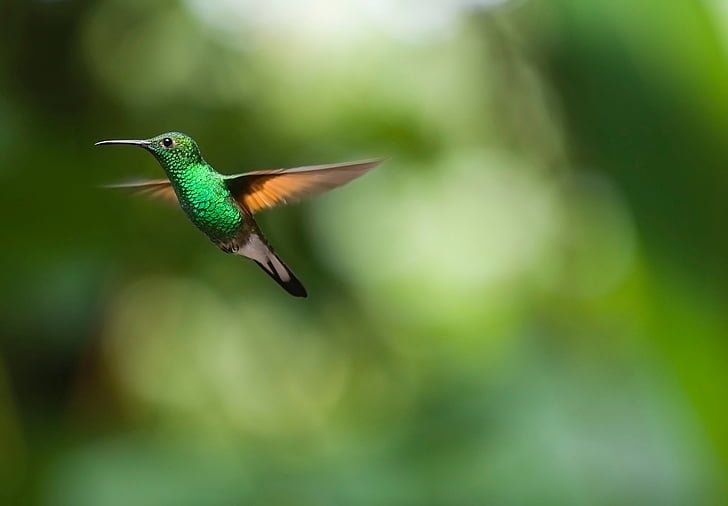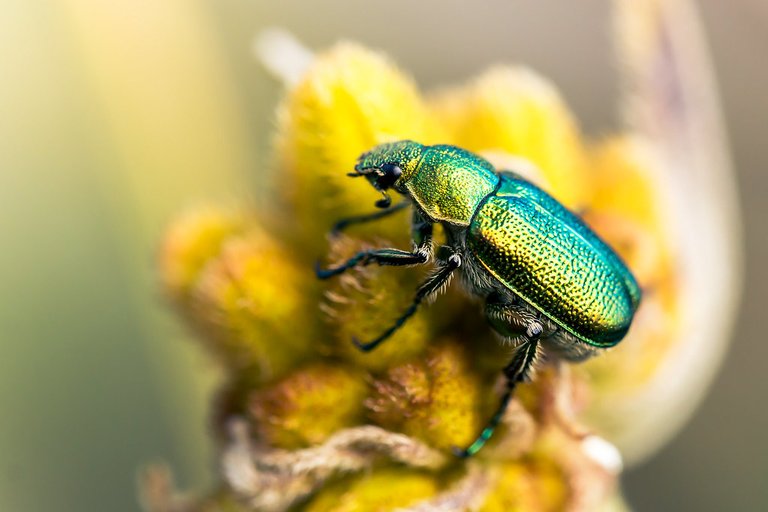Iridescence: Physics Creating Nature's Rainbow Colors
Red, Yellow, Blue, Pink, White, Black, what about Iridescence? Before you ask what color that is, it is rainbow color. We can find iridescence in peacocks, birds, snake bodies, rainbow in the sky, and it can even be found in puddles where oil spill occurred.
When it comes to color, there are several purposes it has in nature generally. Some animals use it to get attention, some use it to disguise and stay concealed, some for hunting, and other are not known to us. In all of this, iridescence are one type of color that usually catch the attention of we humans and blow our minds away because the colors aren't really there but we see them.
In birds like the hummingbird, it looks like physics is just playing a trick on us. While the bird uses color brightness and beauty to determine who to mate, the colors are only as a result of things like Melanin (the same pigments in humans hair), Keratin which what makes up the feathers and it is found in human nails, and air. When the rays of light enter the feathers, they bounce back releasing those colors depending on the wavelength of the light, the angle of light, the valleys and crest. When we look at the feathers from different angles, different waves of light bounce back to the eyes creating different colors that aren't on the skin of the bird.
One animal that shows iridescence completely is the beetle. They make a quarter (1/4) of all known animal species and most of them are iridescence. Not every beetle is iridescence but thousands of beetle species are. The outer layer of a beetle body is made of chitin which is a stiff polymer that bends light via refraction when hit by one. Since the outer shells have layers spaced out and when certain light rays occurs, they refract a few at different angle.
Beetles can use this iridescence nature of theirs as a way of camouflaging into their environment and temperature can also play a role in beetles iridescence color and they are able to reflect some of the UV light back so they do not overheat. Things such as Abalone Seashell which is made up of Nacre reflects light just like the beetle but then, non living things can also create iridescence like Opal. In Opals, Photonic crystals are the ordered structures that causes iridescence in a three dimension manner in a repeated pattern.
That said, before you start to think that pigments or fluorescence are the reasons behind iridescence in animals, they aren't. The color is as a result of physical structures that bend light, causing light waves to interact with themselves. Iridescence is a captivating natural phenomenon that demonstrates the interplay between light and biological structures. From the shimmering feathers of birds to the reflective shells of beetles, iridescence serves various functions, from attracting mates to camouflage and temperature regulation. These rainbow colors, though not truly present on the surface, enchant us through their magical display, reminding us of the intricate beauty of the natural world.
Read More On Iridescence
https://www.ncbi.nlm.nih.gov/pmc/articles/PMC2706478/
https://www.ncbi.nlm.nih.gov/pmc/articles/PMC2706472/
https://journeynorth.org/hummingbirds/resources/article/iridescent-feathers
https://www.scientificamerican.com/article/hummingbirds-iridescent-feathers-are-still-a-bit-of-a-mystery/
https://www.ncbi.nlm.nih.gov/pmc/articles/PMC6244987/
https://geologyscience.com/gemstone/opal/?amp=1
https://www.sciencedirect.com/topics/physics-and-astronomy/iridescence
https://www.ncbi.nlm.nih.gov/pmc/articles/PMC10462570/
https://www.sciencedaily.com/releases/2022/05/220503141337.htm
https://phys.org/news/2022-05-beetle-iridescence-deceptive.html


Thanks for your contribution to the STEMsocial community. Feel free to join us on discord to get to know the rest of us!
Please consider delegating to the @stemsocial account (85% of the curation rewards are returned).
Thanks for including @stemsocial as a beneficiary, which gives you stronger support.